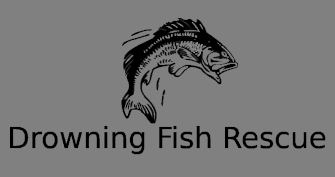Discover how to catch bluegill in shallow water rivers during drought conditions with expert tips, proven techniques, and recommended lures.
Introduction to Bluegill Fishing in Drought Conditions
Bluegill, a popular panfish species, are known for their abundance and eagerness to bite, making them a favorite among anglers. However, fishing for bluegill in shallow water rivers during a drought presents unique challenges. Low water levels, warmer temperatures, and reduced cover can make these fish more cautious and harder to locate. This article explores how to adapt your fishing strategy to find and catch bluegill under these tough conditions, with a focus on effective techniques, optimal locations, and the best lures to use. Whether you’re a beginner or an experienced angler, these tips will help you succeed.
Understanding Bluegill Behavior During a Drought
Droughts significantly alter river ecosystems, reducing water levels and concentrating fish in smaller areas. Bluegill, which typically thrive in shallow waters with ample cover like vegetation or fallen logs, may behave differently when water is scarce. According to research, low water levels can lead to habitat bottlenecks, where fish congregate in specific areas due to limited spawning and feeding grounds. This makes understanding bluegill behavior crucial for success.
During droughts, bluegill often seek out:
- Deeper pools: Even in shallow rivers, bluegill will gravitate toward deeper holes or pockets where water remains cooler and more stable.
- Shaded areas: Overhanging trees, docks, or other structures provide shade and protection from predators, making them prime spots.
- Vegetation and cover: Remaining weed beds or submerged logs attract bluegill seeking food and shelter.
- Slower currents: Bluegill prefer slack water or areas with minimal flow, as strong currents can be challenging in low-water conditions.
By targeting these areas, anglers can increase their chances of locating bluegill schools. For more insights on fish behavior in altered river conditions, check out this study on fish assemblages in large rivers.
[](https://www.sciencedirect.com/science/article/abs/pii/S0048969718328985)
Techniques for Catching Bluegill in Shallow Rivers During Drought
Fishing in drought-affected rivers requires a strategic approach. Here are some proven techniques to maximize your success:
1. Use Light Tackle
Bluegill have small mouths and are sensitive to heavy gear. Use an ultralight spinning rod with 2-4 lb test line to detect subtle bites. A sensitive rod tip is essential for feeling the light taps of a bluegill, especially in low-visibility water. Pair your rod with a small reel for better control when casting lightweight lures or bait.
2. Fish Early or Late in the Day
During droughts, water temperatures can rise significantly, making bluegill less active during the heat of the day. Early morning or late afternoon, when water is cooler, are the best times to fish. According to the Indiana DNR, fishing during these times increases success as fish become more active.
[](https://www.in.gov/dnr/fish-and-wildlife/education-programs/learn-to-fish/fishing-tips-and-videos/fishing-tips-when-and-where/)
3. Target Specific Structures
Bluegill congregate around structures like fallen trees, docks, or weed beds. In shallow rivers, look for areas where water pools or where vegetation remains. Cast near these structures, but be stealthy—bluegill in shallow water are wary, especially during droughts. A quiet approach, as suggested for smallmouth bass fishing in shallow rivers, can also apply to bluegill.
[](https://www.bassresource.com/fishing/shallow-river-smallmouth.html)
4. Use a Slip Bobber Setup
A slip bobber rig is highly effective for bluegill, allowing precise depth control. Pair a 1/16-ounce tungsten jig with a small soft plastic or live bait under a slip bobber. This setup, recommended by Wired2Fish, lets you target fish at varying depths without retying.
[](https://www.wired2fish.com/crappie-fishing/bluegill-fishing-tips-with-bobbers-and-plastic-lures)
5. Adapt to Muddy Water
Droughts can stir up sediment, reducing water clarity. In muddy conditions, bluegill rely on scent and vibration. Use brightly colored lures like chartreuse or white, or add scent with products like Berkley Crappie Nibbles to attract fish. Black lures can also work, as they create a solid silhouette in low-visibility water.
[](https://strikeandcatch.com/how-to-catch-bluegill-in-muddy-water/)
Best Lures and Baits for Bluegill in Drought Conditions
Choosing the right lures and baits is critical when fishing for bluegill in shallow, drought-affected rivers. Here are some top recommendations, with links to purchase:
-
- 1/32-Ounce Jig with Soft Plastic: A small jig head with a 1-inch soft plastic grub or spider is ideal. Try the Leland’s Crappie Magnet for its versatility and effectiveness.
- Inline Spinners: Small spinners mimic fleeing baitfish. The Panther Martin Spinner in gold or silver is a great choice for rivers.
[](https://fishing.scoutlife.org/best-bait-or-lures-to-use-in-streams-and-small-rivers/)
-
- Live Bait: Worms, crickets, or wax worms on a size 8-10 hook are foolproof. Purchase Berkley PowerBait Worms for enhanced scent.
- Poppers for Fly Fishing: If fly fishing, use small poppers or rubber spiders. Check out the Bett’s Balsa Poppers for quality options.
[](http://www.premier-fishing-tips.com/bluegill-fishing.html)
These lures and baits are effective because they mimic bluegill’s natural prey, such as small insects or crustaceans, and are suitable for the low-water conditions of a drought.
Adapting to Environmental Challenges
Droughts not only lower water levels but also increase water temperature and reduce oxygen levels, affecting fish behavior. Research indicates that climate change and drought can impact fish habitats, pushing bluegill to seek stable environments. To adapt:
[](https://ouci.dntb.gov.ua/en/works/4aYew5N4/)
-
- Monitor Water Temperature: Bluegill spawn and feed actively at 65-80°F. Use a thermometer to check water temperature and focus on areas within this range.
- Look for Oxygen-Rich Areas: Areas with slight current or near inflows may have higher oxygen levels, attracting bluegill.
- Avoid Overfished Spots: Overharvesting can deplete bluegill populations, especially in stressed environments. Follow local regulations and practice catch-and-release when possible.
[](https://maumeetackle.net/fishing-tips/bluegill-tips/)
Conclusion
Finding and catching bluegill in shallow water rivers during a drought requires adapting to changing conditions. By targeting deeper pools, shaded areas, and cover, using light tackle, and selecting the right lures or baits, you can improve your success rate. Timing your fishing trips for early morning or late afternoon and staying stealthy will also help. With the right approach, drought conditions can still yield rewarding bluegill fishing experiences. For more fishing tips, visit Wired2Fish’s guide on bluegill fishing or explore local regulations at your state’s Fish and Wildlife Service.
